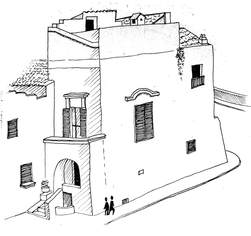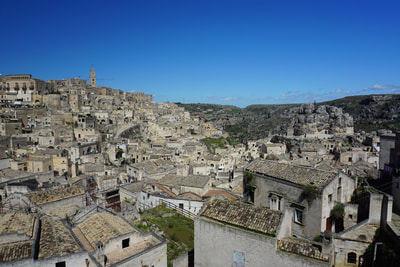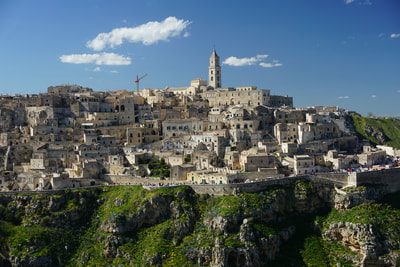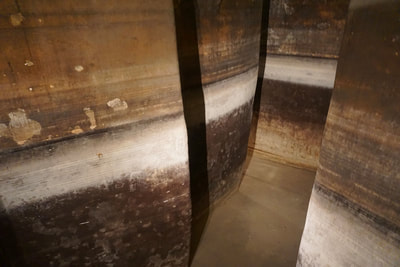|
Matera is one of the best example of a troglodyte settlement in the Mediterranean region, perfectly adapted to its terrain and ecosystem. Natural caves in the tufa limestone, attracted the first inhabitants about 7,000 years ago. Later, more elaborate structures were built atop. Not so long ago, Matera was claimed to be the “the shame of Italy” for its dismal poverty. In the 1950's, the entire population of roughly 16,000 people, were relocated to new housing projects in a poorly planned government program. It wasn't until 1986 when a law was passed to move people back in. Following this, in 1993 the the area was declared a UNESCO site. Renovating the caves people discovered eight interconnected cisterns below the floor, part of a network developed to catch rainwater for drinking. Today, carved stone stairways still connect arches, attics and balconies, each grafted onto the other. Films, such as, 'The Passion of the Christ' (2004), and the 'European capital of culture' (2019) award has brought Matera back to life. “Matera is one of the oldest living cities in the world in terms of continuity,” -Antonio Nicoletti, an urban planner from Matera. References
Perrottet, Tony (2014). Smithsonian Magazine How Matera Went From Ancient Civilization to Slum to a Hidden GemOnce the “shame of Italy,” the ancient warren of natural caves in Matera may be Europe’s most dramatic story of rebirth Comments are closed.
|
Archives
July 2018
Categories
All
|




